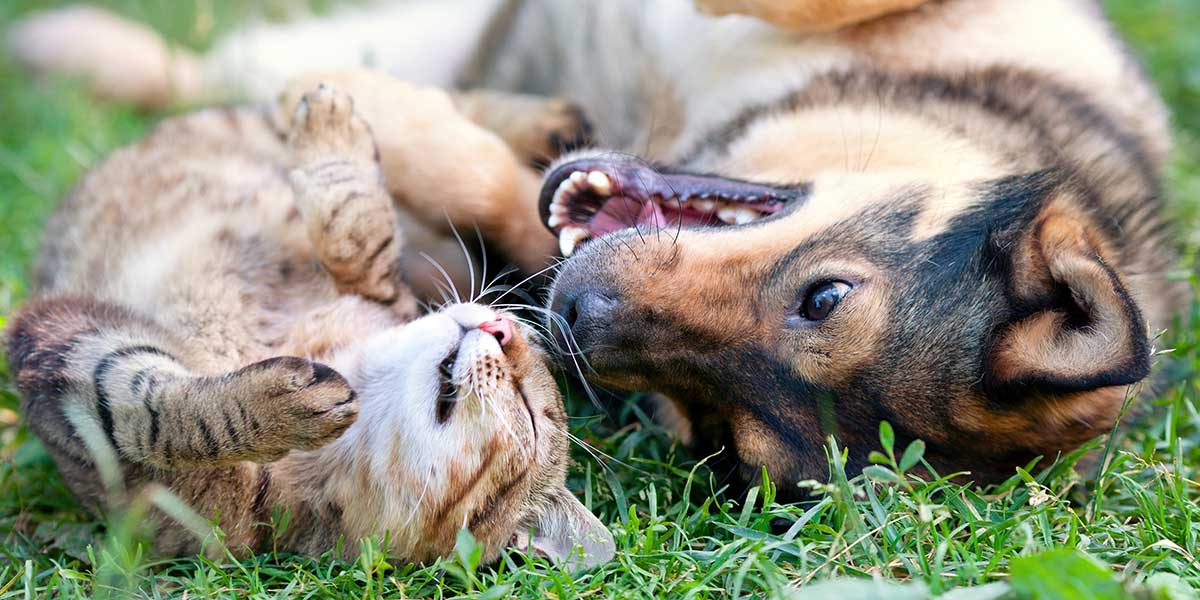Owners of domesticated pets, such as dogs, cats, and even ferrets, wonder about the necessity of getting their animals inoculated against rabies in this day and age and—to add insult to injury—making them indefinitely wear visible rabies license tags to show they’ve been vaccinated. The short answer is Yes, it is necessary! Unlike smallpox (the only microbe-caused disease known, as of 1980, to be effectively eradicated globally), rabies still thrives in parts of the world. Because they are mammals, your furry pets are vulnerable.
The rabies disease is like something lifted from a zombie or wolfman film, so monstrous are the symptoms and bleak the outlook. It has in essence a 100% fatality rate in mammals, including human beings (if one does not count the so-rare-as-to-be-negligible experimental Milwaukee Protocol treatment, which has only ever saved five people). Worse yet, death comes slowly, in an agony of physical distress and cognitive delirium. It is a malady worthy of the fearful and dramatic language with which it is described in one of the most authoritative books on the subject, Rabid: A Cultural History of the World’s Most Diabolical Virus by Bill Wasik and Monica Murphy, as seen in this excerpt (pp. 3–4):
It is the most fatal virus in the world, a pathogen that kills nearly 100 percent of its hosts in most species, including humans.… On entering a living thing, it eschews the bloodstream, the default route of nearly all viruses but a path heavily guarded by immuno-protective sentries. Instead, like almost no other virus known to science, rabies sets its course through the nervous system, creeping upstream at one to two centimeters per day (on average) through the axoplasm, the transmission lines that conduct electrical impulses to and from the brain. Once inside the brain, the virus works slowly, diligently, fatally to warp the mind, suppressing the rational and stimulating the animal. Aggression rises to fever pitch; inhibitions melt away; salivation increases. The infected creature now has only days to live, and these he will likely spend on the attack, foaming at the mouth, chasing and lunging and biting in the throes of madness—because the demon that possesses him seeks more hosts.
If this sounds like a horror movie, we should not be surprised, for it is a scenario bound up into our very concept of horror. Rabies is a scourge as old as human civilization, and the terror of its manifestation is a fundamental human fear, because it challenges the boundary of humanity itself. That is, it troubles the line where man ends and animal begins—for the rabid bite is the visible symbol of the animal infecting the human, of an illness in a creature metamorphosing demonstrably into that same illness in a person.
While the risks of infection have been medically minimized in North America (relative to global hotspots in Africa and Asia), it has not been—nor likely will it ever be—eliminated entirely, and so caution should be exercised by the owners of any mammal, no matter where they live. One of the smartest ways to accomplish this is with the help of rabies license tags.
It is not all doom and gloom, of course, because the rabies virus is in fact preventable with regular inoculation. Rabies license tags, available from Ketchum Mfg. Co., are designed so as to indicate when your animal was last vaccinated against the rabies virus. Manufactured locally in upstate New York, our rabies tags are crafted from aluminum, brass, or stainless steel for quality and durability. For 2022, you can choose from an array of rabies tags in different materials to match your style and your pet’s personality:
- Orange-painted aluminum
- Plain aluminum
- Brass
- Stainless steel
The shape and (optional) color of rabies tags indicate when the animal received their last shot, which makes these tags a handy reminder to owners when it’s time to take their pet in to the vet for another shot. While not mandated by law, by generally accepted convention the “design” of rabies tags changes from year to year. In prior years, the shape/color convention was as follows:
- 2021: Rosette shape (blue)
- 2020: Heart shape (red)
- 2019: Bell shape (green)
To see that up-to-date rabies license tag hanging from the animal’s neck is not just an assurance for a pet-owner, but for strangers as well. In the unfortunate event that your pet escapes from the home and wanders off somewhere, anyone they encounter can see that the creature is not a threat. This is particularly important if an animal-control professional is involved in confining the pet until it can be reunited with its owner, since the poor critter might be frightened and exhibit unusual or erratic behavior due to the stressful situation it may find itself in. The easily identifiable shape and color coding of the rabies license tag provide essential information that will be visible from a distance to anyone interacting with the animal.
Thus, it is more than worth it to show off your animal’s protection against this terrible disease and take a load off yours and everyone else’s mind with a sign in the form of durable, locally-produced rabies license tags.








